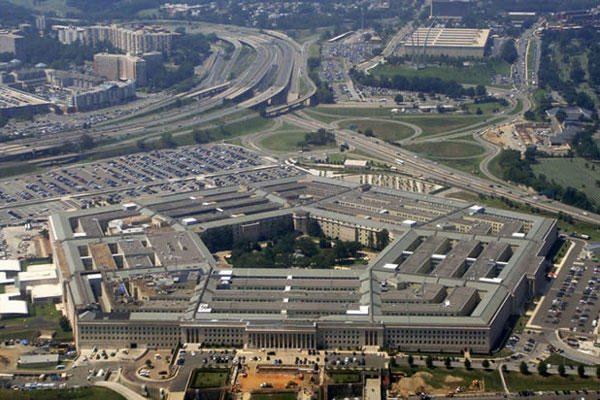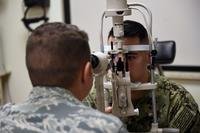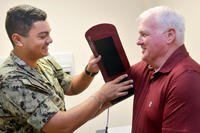 Military Update: Defense Secretary Ash Carter’s “Force of the Future” initiative is expected to include a unique Defense Digital Services office that, within a year, would hire up to 100 top designers, developers and engineers from government and Silicon Valley to launch a new era of digital innovation across the Department of Defense, internal documents explain.
Military Update: Defense Secretary Ash Carter’s “Force of the Future” initiative is expected to include a unique Defense Digital Services office that, within a year, would hire up to 100 top designers, developers and engineers from government and Silicon Valley to launch a new era of digital innovation across the Department of Defense, internal documents explain.
Defense Digital Services will “recruit top talent from the private sector, coordinate technical innovation activities” department-wide and “rapidly deliver new tools and practices that are reusable, cut costs and improve user experience,” according to Reform Proposal 1 of the near-final packet of 29 personnel initiatives to be presented to Carter soon.
Brad Carson, acting under secretary of defense for personnel and readiness, who led the months-long effort to shape the Force of the Future package, decided to remove references to the digital services office being housed in an “innovation bunker in the heart of the Pentagon” as perhaps a bit too dramatic.
But the digital services team is to be located both deep inside the Pentagon and in a separate office in Silicon Valley, nickname for an area south of San Francisco that is home to the world’s largest high-tech firms.
Carter, a physicist who at one time served as under secretary of defense for acquisition, technology and logistics, and later on boards of directors for large technology companies, is keenly aware of the army of technical experts working in Silicon Valley and at other technology hubs.
“I'm trying to build bridges to those folks,” Carter explained Tuesday while hosting a worldwide “troop talk” over the internet and social media from Fort Meade, Md. “Some of them don't know us because, remember, only a small slice of our society these days serves. And so I'm trying to connect us to them so we have their best ideas and their best technology.”
A few days earlier Carter showed his interest in partnering with Silicon Valley by announcing funding of an industry innovation institute that will propel development of hybrid electronics, an emerging technology that will enhance war fighting through use of lightweight and shapeable sensors.
Carter described science fiction-like scenarios in which sensors are built into the shape of ships and aircraft to give instant feedback on damage, ground troops wear flexible sensors in clothing to lighten loads and enhance battlefield awareness, and wounded warriors “benefit from smart prosthetics that have the full flexibility of human skin.”
“The reality [is] we don’t know all the applications this new technology will make possible. That’s the remarkable thing about innovation,” he said, “and it’s another reason why America and [our] military must get there first.”
Hybrid electronics is just one field of digital technology, Carter said. He alluded to advances possible in many others during a speech Tuesday to The American Legion national convention in Baltimore.
“It’s not just about the best technology. You know we need the best people, too. So we’re drilling tunnels through the wall that sometimes seems to separate government from the innovative private sector – so more of America’s brightest minds can contribute to our mission, even if for a time.”
Force of the Future background papers describing the proposed Defense Digital Services office find fault with the department’s current “internal capacity and talent to deliver digital services” that can meet public expectations or long-term national security requirements.
“Over the past three decades, federal agencies have increasingly outsourced their ‘tech brain’ -- at the same time relying on antiquated digital development techniques and procurement processes to meet rapidly challenging user expectations and marketing conditions,” the papers explain.
“These conditions led to the recent Healthcare.gov fiasco” during implementation of the Patient Protection and Affordable Care Act “and the Office of Personnel Management security breach” that allowed millions of U.S. government personnel records to be stolen, most likely by China. “Compared to an industry that redefines itself every 18 months, existing DoD approaches are neither agile nor competitive with respect to cost, speed and quality,” the background papers contend.
In arguing for a new “hub” of experts with new authorities, the proposal says the “rapidly changing technology environment demands user-centered approaches to digital services,” which are “standard in the private sector technology startups but mostly foreign to DoD.”
Standing up “a team of this sort…with a charge to disrupt will likely face some challenges,” the papers warn. “Existing departments and agencies may resist change.” And while autonomy “from bureaucratic impediments are vital to success” the “hierarchical structure” of a large organization like DoD “is often a limiting factor in fostering experimentation and innovation.”
Defense Digital Services will need department leaders to give it “a ‘safe space’ to experiment, test, potentially fail and iterate, as necessary.”
The estimated cost of establishing the office is $175 million over five years. Measured against an annual DoD information technology budget of $35 billion, this “should be viewed as an investment in a technology startup that will have a positive return.” In its first year, the office could return five to 10 times its startup costs as savings on digital services, proponents argue.
Success would be achieved in year one if the team can build a “digital innovation brand” and recruitment strategy for DoD, improve its high-tech hiring process and have in place a team of 50 to 100 digital innovators.
This and five other Force-of-the-Future ideas would impact both military and civilian personnel. Another 12 target military personnel policies only, and have been described in our last three Military Update columns. Eleven proposals still to be described would modernize the civilian workforce.
Personnel chiefs of the services “non-concurred” with most of the package, citing the impact on personnel costs as budget sequestration is squeezing out more critical defense priorities and forcing deep staff cuts.
“The services are viewing this [exercise] as the ‘political good idea factory’,” said a senior Defense official. For example, a proposal to extend to every new parent employed by the department, military or civilian, 18 weeks of paternity leave, is viewed as commendable. It is also seen, by some military branches, as unaffordable given current budget constraints.
“The services are saying [to Carson] not to ignore the cost impacts when you are talking about these good ideas,” this official said.
To comment, write Military Update, P.O. Box 231111, Centreville, VA, 20120 or email milupdate@aol.com or twitter: @Military_Update
# # # #
Tom Philpott has been breaking news for and about military people since 1977. After service in the Coast Guard, and 17 years as a reporter and senior editor with Army Times Publishing Company, Tom launched "Military Update," his syndicated weekly news column, in 1994. "Military Update" features timely news and analysis on issues affecting active duty members, reservists, retirees and their families.
Visit Tom Philpott's Military Update Archive to view his past articles.
Tom also edits a reader reaction column, "Military Forum." The online "home" for both features is Military.com.
 Tom's freelance articles have appeared in numerous magazines including The New Yorker, Reader's Digest and Washingtonian.
Tom's freelance articles have appeared in numerous magazines including The New Yorker, Reader's Digest and Washingtonian.
His critically-acclaimed book, Glory Denied, on the extraordinary ordeal and heroism of Col. Floyd "Jim" Thompson, the longest-held prisoner of war in American history, is available in hardcover and paperback.




